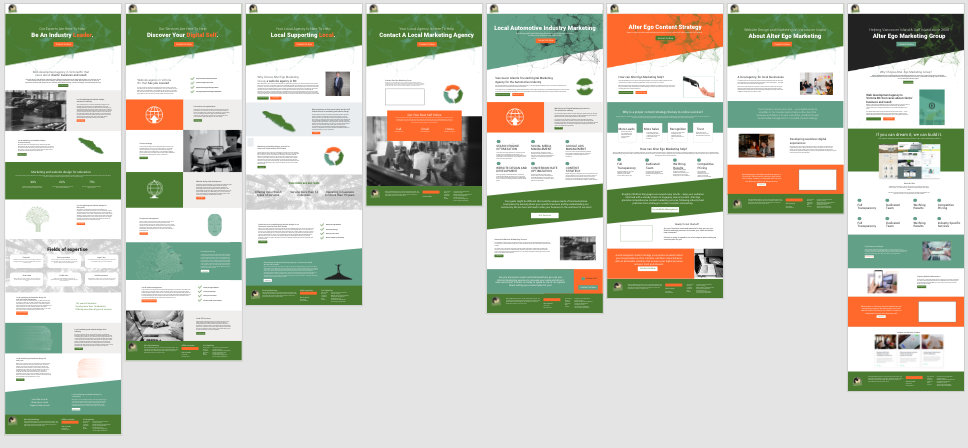Testimonials are a tried-and-true marketing technique that can help overcome objections and convince people to buy your product or service by providing social proof that your product is good. They’re used everywhere: on TV, in advertorials, even on the web. (We have ours too!) They’re especially useful for more expensive products or services, where the investment is significant and potential customers need some reassurance that it will perform as expected. However, testimonials can be tricky; especially on the internet, they can be made up or paid, and it’s really difficult to verify their truthfulness.
But what if your product or service doesn’t really lend it self to lengthy testimonials? What if you just want to sell more copies of your ebook or your innovative kitchen gadget? What if you want more people to join your online community or inquire about your consulting services? Social proof (the idea that when a lot of people do something, you want to do it it too) is where you should put your efforts. Whereas testimonials can easily be falsified or manipulated (all you need is one satisfied client), social proof uses hundreds and thousands of people to show the effectiveness or interest of your product or service.
Social proof is a great way to establish that what you offer is popular and therefore worthy of money or time. It’s how you prove that you have a captive and engaged audience and use that information to leverage more leads and sales.
Smart technique #1: Give it away for free
Bloggers have long known that giving stuff away for free–ebooks, advice, exclusive content by email–is the best way to quickly grow an email list.
A big email list is one kind of social proof–so is the number of downloads of an ebook or orders for a sample. Giving things away for free to get any of these kinds of social proof is a quick and easy way to get more interest in your business or blog.
Build your social proof by announcing the number of people who requested your content:
- “Read the book that delighted X people!”
- “Join X others in our community!”
- “X others have tried our product… it’s yours for free!”
The higher number you have, the more convincing your offer will be–but beware, only use this technique when you have 1000+ people, as anything below might actually hurt your efforts.
Smart technique #2: Encourage reviews
A long list of positive reviews confers lots of social proof to the product; 33% of buyers list “Customer reviews” as one of their top influencing factors.
However, getting people to spend the time to review on the internet may require a little coaxing and convincing, so it’s important to make it really easy for them. Here are some ideas:
- Provide a custom link on your thank-you email
- Put a QR code on receipts you give customers
- Add a call to action: “Liked our service/product? Tell us on (website)!”
- Embed a link in your ebook or PDF directly to your book listing on Amazon and Goodreads
Most sites keep some kind of rating that potential customers can see at a glance; the more positive reviews you have, the better this overview rating will be, so encourage satisfied clients to put their word in.
Smart technique #3: Start a newsletter
Although it’s not a type of social proof per se, a newsletter is still the best way to engage your audience. And, as mentioned in #1, a newsletter with tons of subscribers can provide its own social proof, especially if you’re a web-based consultant, writer or speaker.
Your newsletter is different from blog updates; a newsletter usually offers some kind of exclusive or curated content that isn’t available on your website. It gives your audience a reason to give you their email address instead of just getting the RSS feed.
Smart technique #4: Go viral
Okay, going viral isn’t really a “technique”; it’s usually something that happens without us having much control over it. But there are few things more effective for social proof than content going viral.
Even though virality is mostly in the hands of the people who consume your content, there are things you can do turn the odds in your favor. We’ve covered this topic on a previous Stikky Media post, so go there if you want to learn more about the recipe for viral campaigns.
Smart technique #5: Get a famous evangelist
Sometimes social proof can come from one person–one powerful, influential, popular person on social media.
Take for example how Guy Kawasaki is the evangelist for Canva, the easy DIY graphic design web app. His support means that he talks about Canva a lot, uses Canva for his own content, and generally spreads the word about Canva to his social networks.
To get such an endorsement, you need to have something quite exceptional to offer and you need to have built a relationship with the influencer over time. But it’s certainly not impossible to achieve.
Social proof is on the rise
Because of all the content available today, the need for social proof is more important than ever. Social proof:
- Distinguishes your product or service
- Confirms its popularity
- Shows that others have enjoyed it
- Ascertains its quality
Working on your social proof today using one of these techniques is an investment for the future of your business.



